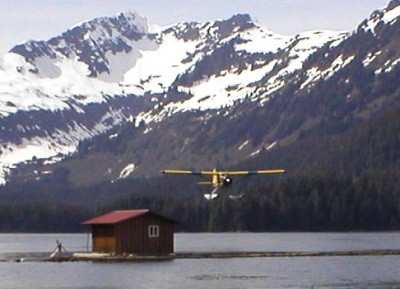Fri, Jul 01, 2011
OASIS provides critical, real-time, integrated information for
FAA briefings to general aviation pilots
The FAA has awarded a potential 42-month, $56.7 million
follow-on contract to Harris Corporation to upgrade and manage the
system that currently provides real-time weather data and
flight-planning capabilities supporting Alaska's general aviation
community. The award consists of a one-year base contract, a
one-year option, and three six-month options through December
2014.

Under the Operational and Supportability Implementation System
(OASIS) program, Harris will provide integrated flight planning and
real-time weather briefing capabilities to FAA Flight Service
specialists. OASIS also supports "Notice to Airmen" (NOTAM)
messages - which alert pilots to potential hazards, as well as
up-to-date radar and satellite imagery. As part of the contract,
Harris will upgrade hardware and software for the OASIS flight
service automation system, and will provide system test and
maintenance support services.

The OASIS system, which first went online in 2007, is
operational at 18 sites in Alaska and is installed at four support
sites in the continental U.S.
"OASIS is critical to ensuring the safety of general aviation
aircraft operating in the challenging weather conditions and remote
mountainous terrain of Alaska," said John O'Sullivan, vice
president, Harris Mission Critical Networks. "As a managed service,
OASIS ensures low-risk, cost-effective modernization of the FAA's
technology infrastructure in Alaska and leverages the experience we
have gained from other programs, including the FAA
Telecommunications Infrastructure (FTI) program."

Harris has a long history of developing and integrating system
solutions for the FAA in support of the National Airspace System
(NAS). The company is the prime contractor for the FTI program,
which is providing improved network security and communications
services to more than 4,000 FAA facilities nationwide.
In addition to FTI and OASIS, other FAA programs developed by
Harris include:
- Weather and Radar Processor (WARP), which provides weather
information to air traffic controllers in the en-route air traffic
control environment.
- Voice Switching and Control System (VSCS), which provides the
critical air-to-ground communications links between en-route
aircraft and air traffic controllers throughout the continental
U.S.
- Alaskan NAS Inter-facility Communications System (ANICS), which
provides satellite-based communications for the NAS in Alaska.
More News
“While legendary World War II aircraft such as the Corsair and P-51 Mustang still were widely flown at the start of the Korean War in 1950, a new age of jets rapidly came to >[...]
Decision Altitude (DA) A specified altitude (mean sea level (MSL)) on an instrument approach procedure (ILS, GLS, vertically guided RNAV) at which the pilot must decide whether to >[...]
Aero Linx: National Aviation Safety Foundation (NASF) The National Aviation Safety Foundation is a support group whose objective is to enhance aviation safety through educational p>[...]
Also: Cal Poly Aviation Club, $$un Country, Arkansas Aviation Academy, Teamsters Local 2118 In response to two recent general aviation accidents that made national headlines, more >[...]
“The FAA is tasked with ensuring our skies are safe, and they do a great job at it, but there is something about the system that is holding up the medical process. Obviously,>[...]
 Aero-News: Quote of the Day (04.28.25)
Aero-News: Quote of the Day (04.28.25) ANN's Daily Aero-Term (04.28.25): Decision Altitude (DA)
ANN's Daily Aero-Term (04.28.25): Decision Altitude (DA) ANN's Daily Aero-Linx (04.28.25)
ANN's Daily Aero-Linx (04.28.25) Airborne-Flight Training 04.24.25: GA Refocused, Seminole/Epic, WestJet v TFWP
Airborne-Flight Training 04.24.25: GA Refocused, Seminole/Epic, WestJet v TFWP Aero-News: Quote of the Day (04.29.25)
Aero-News: Quote of the Day (04.29.25)




